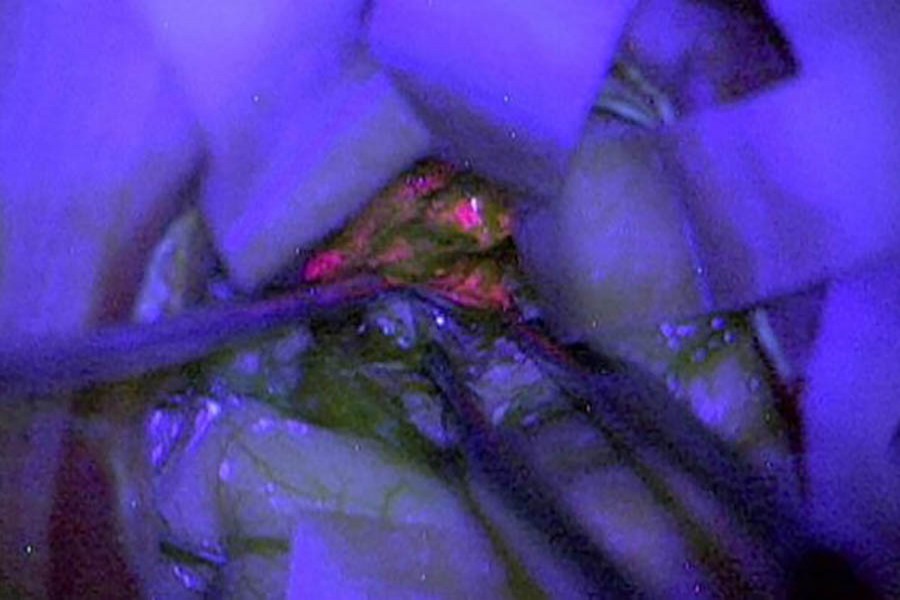A chemical that makes brain tumours glow pink could help surgeons to remove the cancer safely, a trial suggests.
Scientists gave people with suspected glioma a drink containing 5-ALA, a substance known to accumulate in fast-growing cancer cells.
The pink glow the chemical causes was found in people with the most aggressive cancers.
Researchers hope it will make it easier for surgeons to distinguish between cancer cells and healthy brain tissue.
Treatment for glioma, the most common form of brain cancer and the one that killed ex-Labour cabinet minister Dame Tessa Jowell, usually involves surgery to remove as much of the cancer as possible, and the prognosis for patients is often poor.
For this new trial, 99 patients with suspected high-grade (fast-growing) gliomas were given a drink containing 5-ALA before surgery.
Research has previously shown that 5-ALA ends up in fast-growing cancer cells, because they lack an enzyme needed to break down the chemical.
Surgeons used microscopes to help them look for fluorescent tissue while removing tumours from the patients' brains.
During their operations, surgeons reported seeing fluorescence in 85 patients.
Of these, 81 were confirmed by pathologists to have high-grade disease, one was found to have low-grade disease and three could not be assessed.
In the 14 patients in whom surgeons did not see any fluorescence, seven tumours were found to be low-grade gliomas while the other seven could not be assessed.
Study author Dr Kathreena Kurian, associate professor in brain tumour research at the University of Bristol, said: "There's an urgent need to have something while the patient is on the table, while the neurosurgeon is operating, which will guide them to find the worst bits.
"The beauty of 5-ALA is that they can see where high-grade glioma is, while they're operating."
The researchers caution that the study looked at patients who were already suspected to have high-grade tumours, and a larger study in which more patients have low-grade disease would provide more information on the use of this technique.
Other types of markers may need to be tested for detecting low-grade glioma cells, they say.
Next steps could include testing the 5-ALA in children with brain tumours, or to help surgeons distinguish between tumour tissue and scar tissue in adult patients, whose brain cancers have recurred following treatment.
Dr Paul Brennan, from Cancer Research UK, said: "Highlighting the more aggressive tumour cells in real-time could help doctors achieve the delicate balance between removing as much of the tumour as possible while preserving surrounding healthy tissue.
"The fluorescent marker may also ease the burden of follow-up treatment, as cancer cells left behind after surgery require additional radiotherapy or chemotherapy."
The National Institute for Health and Clinical Excellence approved the use of 5-ALA for patients with brain tumours, prior to surgery, earlier this year, reports BBC.
The research is being presented at the 2018 NCRI Cancer Conference in Glasgow from 4 to 6 November.


